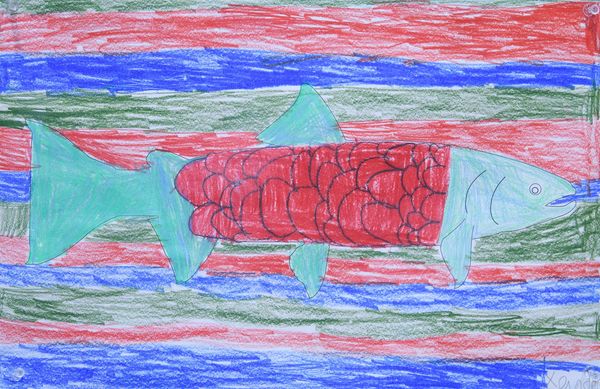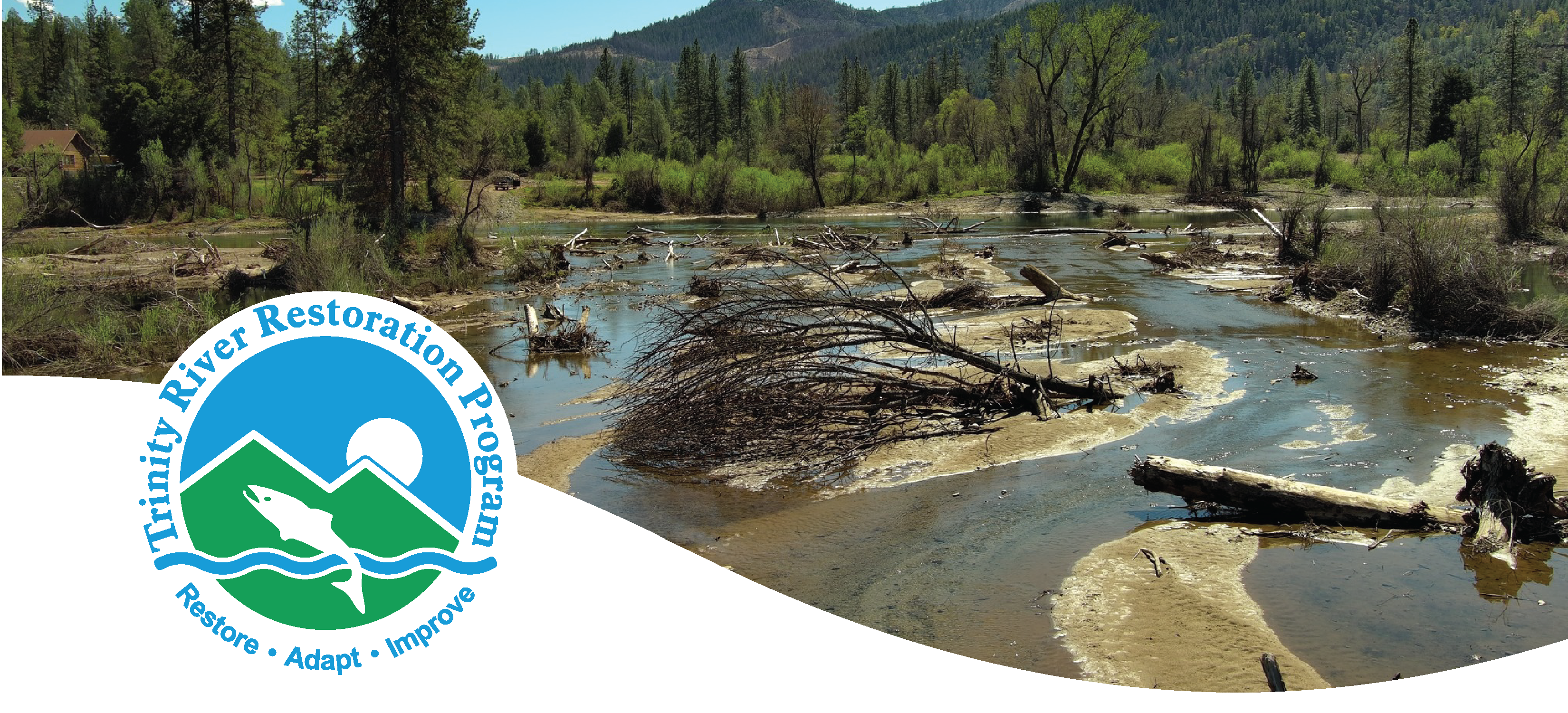
Header photo credit: Aaron Martin – Yurok Tribal Fisheries Department
River Riffle Newsletter – April
Contents
- Reading, Listening, Watching
- Current Conditions: Snowmelt Hydrograph, Peak and Recession
- Program Update: River Acres Demolition Complete
- Implementation Branch: Thank you for attending our Open House!
- Featured Article: The Trinity Watershed Basin’s Water Year Forecast & Local Snow Surveys
- Upcoming Meetings and Events
Reading, Listening, Watching
Calculating the Water Year: Annual Snow Surveys
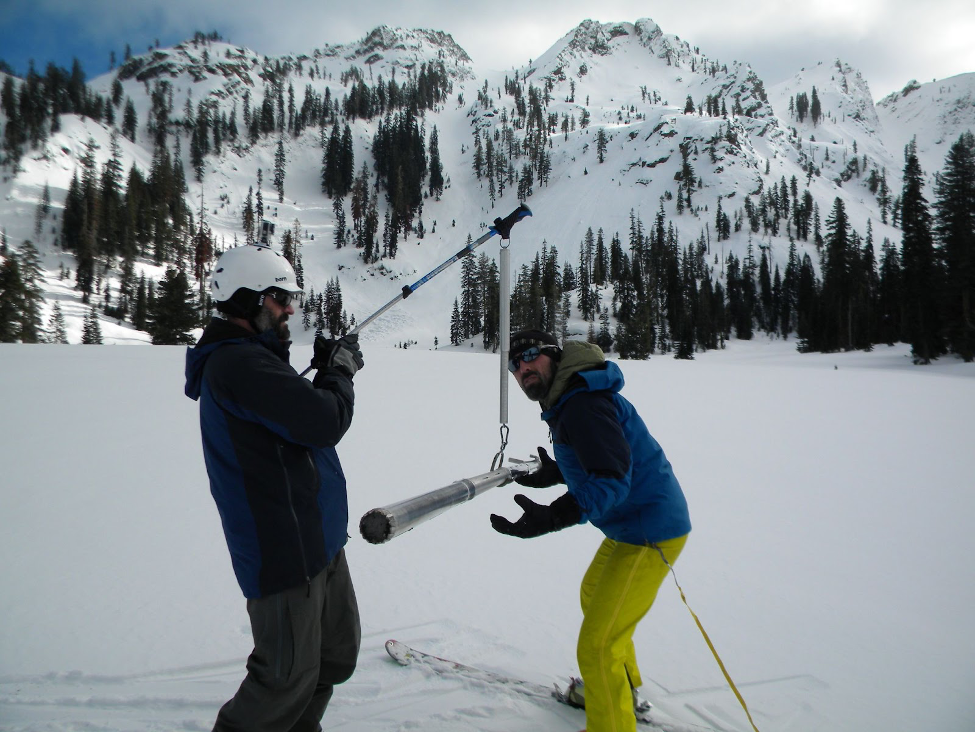
Every February, March, April, and May a small team of backcountry skiers travel to Trinity Alps snow survey locations at Shimmy Lake, Red Rock Mountain, and Bear Basin. These snow survey sites have been measured in exactly the same locations since the 1940s. (The Watershed Research and Training Center)
Water Year 2024 has been determined as “wet” by the California Department of Water Resources.
The California Department of Water Resources April B-120 Water Supply forecast has determined the 2024 water year as “wet” with a forecast total of 1,610,000 acre feet if inflow to Trinity and Lewiston Reservoirs. The determination sets the TRRP volume release at 701,000 acre feet for the year (see graph below).
| State Forecast Inflow to Reservoir (acre-feet) | Water Year Type | Allocation to Restoration (including base flows) |
|---|---|---|
| > 2,000,000 | Extremely Wet | 815,000 |
| 1,350,000 – 1,999,999 | Wet | 701,000 |
| 1,025,000 – 1,349,999 | Normal | 647,000 |
| 650,000 – 1,024,999 | Dry | 453,000 |
| < 650,000 | Critically Dry | 369,000 |
Current Conditions
Water year 2024 restoration flows begin increasing from Lewiston Dam on April 16, 2024. Click the button below to view details about this year’s release.
Snow Melt Flows
The Trinity River watershed is one of many in California that experience an erratic, unpredictable winter with rain and snow or sometimes lack thereof. Winter is a period of general disturbance for the ecology of the river, with the magnitude of that disturbance defined by the magnitude of received weather events. Check out the unimpaired hydrograph developed from empirical data collected from USGS stations on the Trinity River from 1912 through 1960 below. The graph shows the variability and magnitude of flows during the winter period prior to the construction of Trinity and Lewiston Dams (see below).
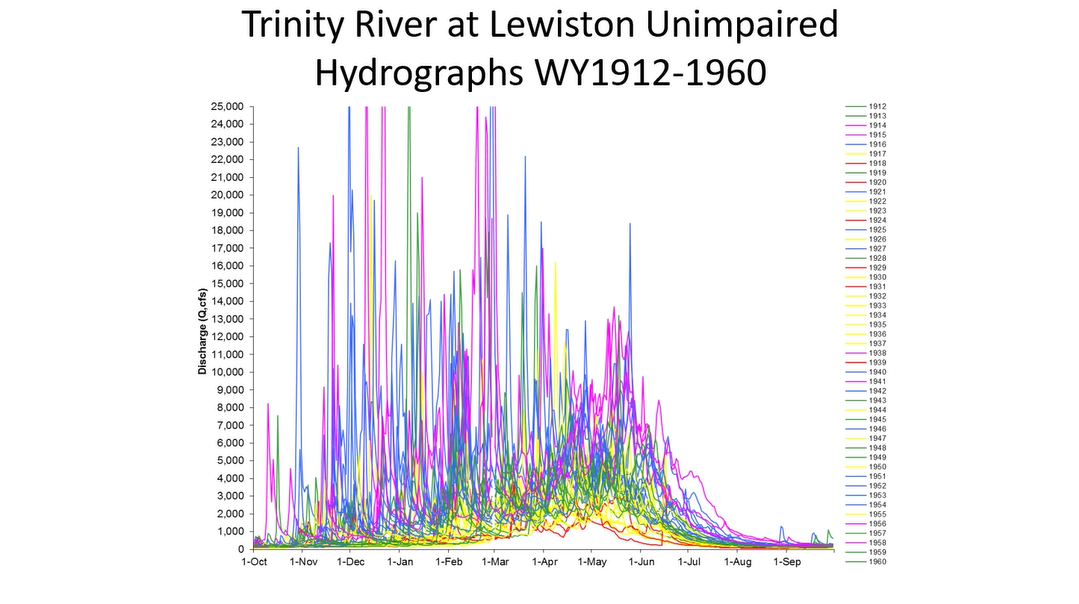
In contrast, you can see the graph start to mellow out from mid-May through August in each year represented above. This longer spring snow-melt recession (prior to the dams) offered a period of stability and relatively good, and sometimes great, conditions for fish and other aquatic organisms. This period of relatively predictable elevated flows and slow recession offered the river a protracted period of habitat expansion and growth opportunity for food and fish to grow together. As water traveled down from the mountain tops, temperatures rose slowly to levels that encouraged cold blooded organisms to grow fat. Listen in as Ken Lindke, Senior Environmental Scientist for the California Department of Fish and Wildlife, explain the ecological landscape for aquatic species during this annual hydrologic event.
Spring Snow Melt and Temperature
River temperatures are not as cold as you would think this time of year given that the water is melted snow. By the time this meltwater gets to rearing juvenile salmonids in the lower reaches of tributaries, temperatures are often in the optimal range for juvenile salmonid growth, 55-60 degrees Fahrenheit. This natural pattern of increasing temperature is widespread across tributaries to the Trinity River but the mainstem below Lewiston Dam is altered by Trinity Reservoir. As air temperatures rise, large bodies of water like Trinity Reservoir experience thermal stratification (the process of waters not in direct contact with the air or sun becoming colder and denser, thus sinking toward the lake bottom). Because the intake valve that releases water from the reservoir into Lewiston lake draws from deep cold water, temperatures released to the river don’t exhibit natural seasonal warming and remain below the optimal range for juvenile salmonid growth.
Program Update

While it has not been a focus of the TRRP for many years, infrastructure improvement was one of the foundational tasks that was laid out in the 2000 Trinity River Mainstem Fishery Restoration Record of Decision. Years of low, predictable flows had led riparian property owners to develop very close to the river’s edge. In order to implement restoration releases, the TRRP has worked with willing property owners to upgrade or remove infrastructure that could be damaged by restoration flow releases as guided by the “maximum fisheries flow” boundary.
Implementation Branch
Open House event a success!
Thank you to everyone who joined us for our Open House at the Junction City Elementary School last month! A special thank you to the Trinity County RCD and the students and staff of Junction City Elementary School who lit up the gym with the Fish of the Trinity River Art Show! Please enjoy a few of the event photos below.

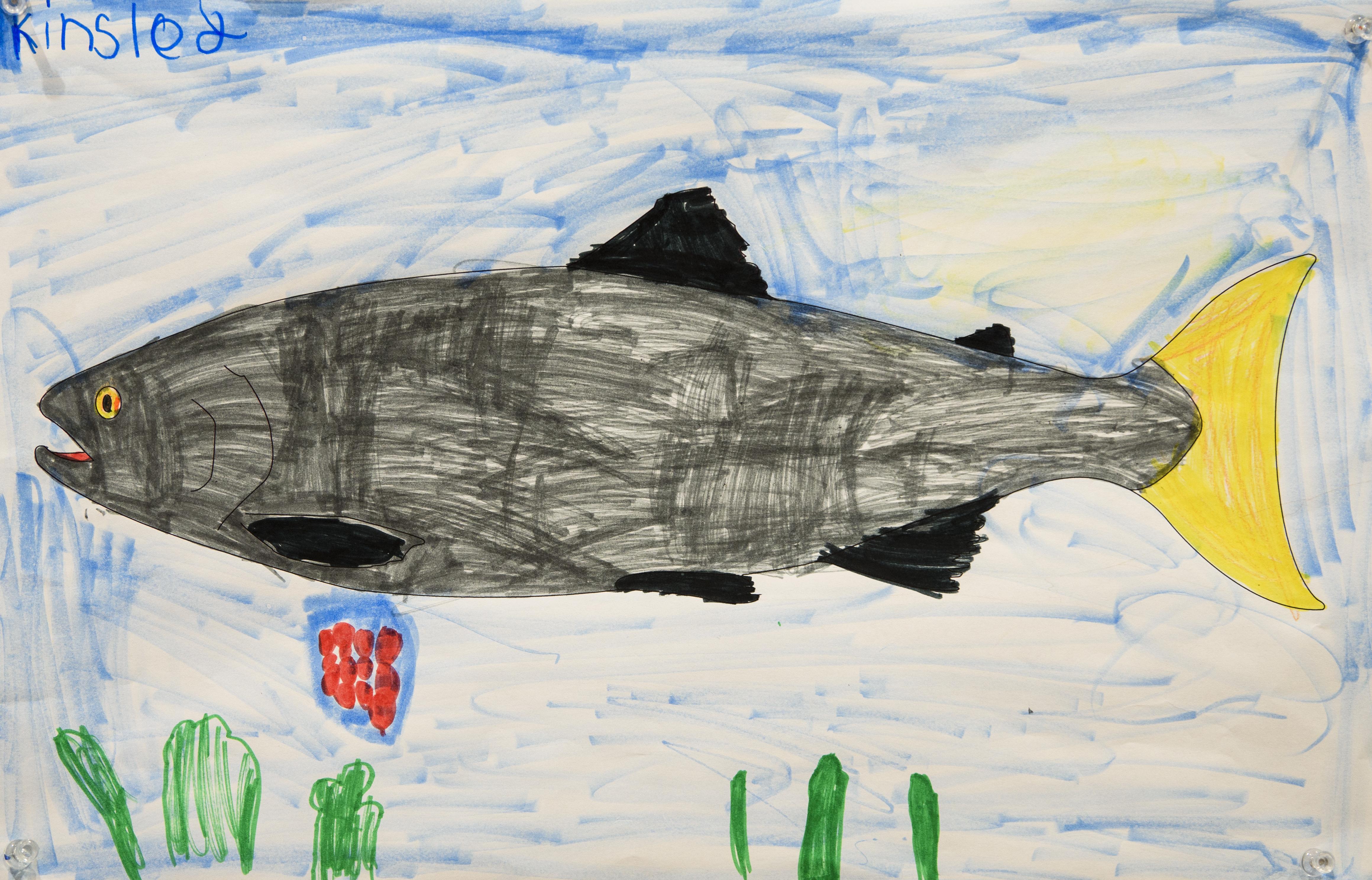
Draft Environmental Assessment for Proposed Rehabilitation Sites
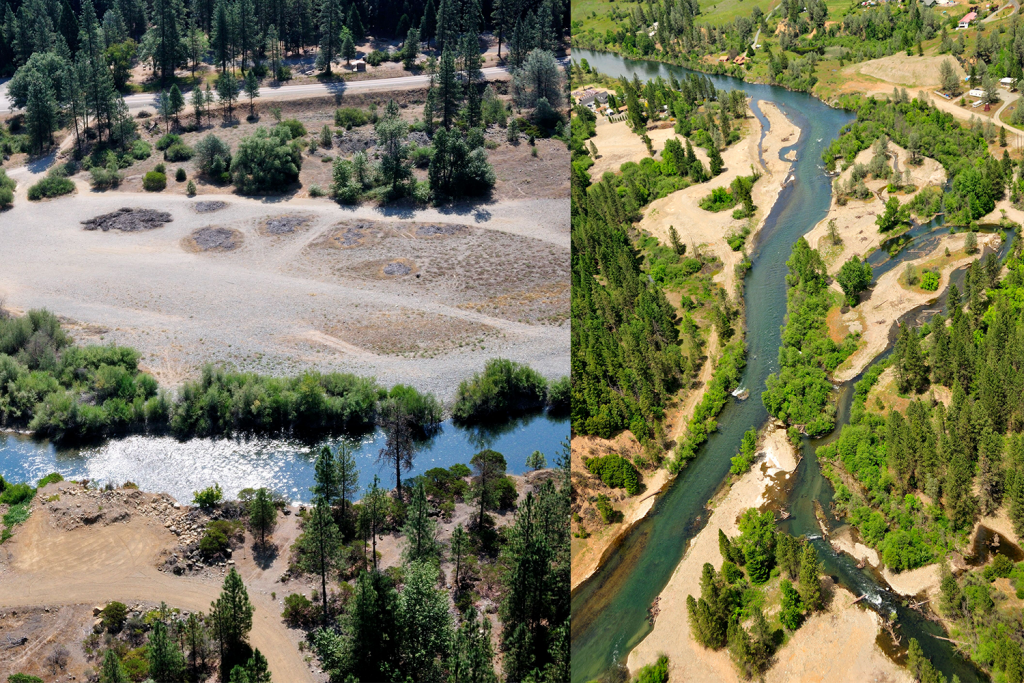
A draft environmental assessment is still awaiting approval for public viewing. Our timeline is hopeful for a release in the coming weeks. The draft environmental assessment discusses two proposed channel rehabilitation projects on the Trinity River, the Upper Conner Creek Rehabilitation Project in Junction City and the Sawmill Gravel Processing Site Project in Lewiston.
Featured Article
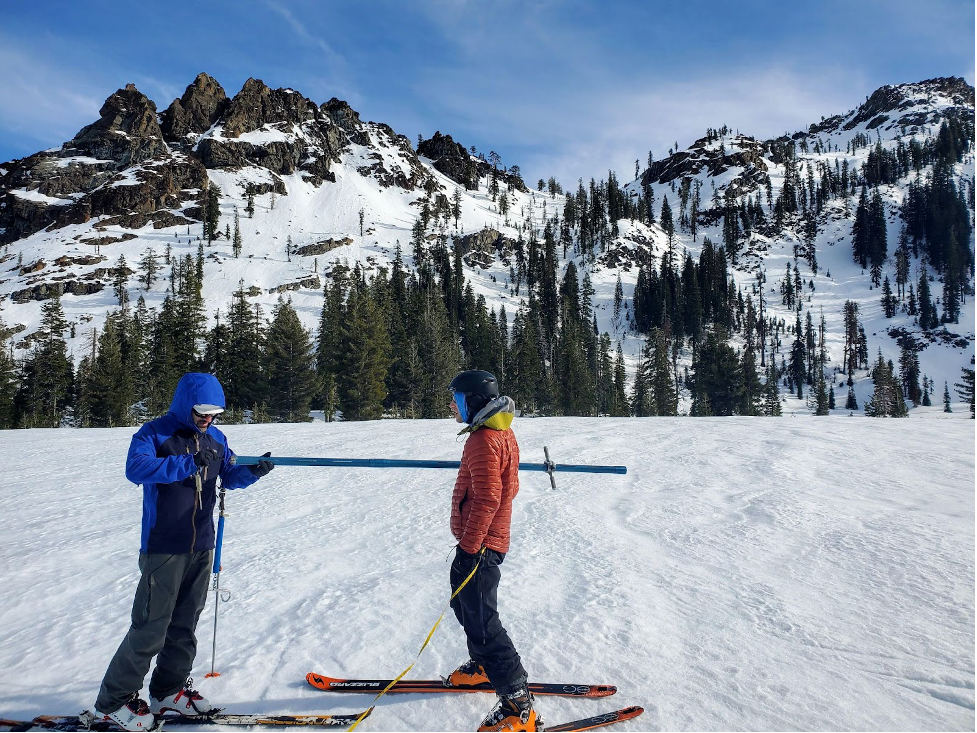
The Trinity Watershed Basin’s Water Year Forecast & Local Snow Surveys
Many Trinity County residents are attuned to the annual water year forecasting prepared by the California Department of Water Resources, also known as the Bulletin 120 or B-120. Every year, the department gathers real time water accumulation information, snowpack data and uses modeling to forecast what to expect for the major snow bearing watersheds in California. The water bean counting starts October 1 (the nominal beginning of California’s wet season) with determinations on the 10th of February, March, April, May and sometimes June each year. The forecasts are broken up into several regions throughout California with the Trinity River at Lewiston Lake forecast filed under the North Coast Hydrologic Region. The ultimate goal of the B-120 is to value expected amounts of water inflow to storage locations around the state. These data makes it possible for water managers to make local informed decisions about potential floods, the amount of water that can be released from reservoir systems, as well as what type of dry season residents and fire agencies could expect within their regions.
Photo provided by: The Watershed Research and Training Center/Dillon Sheedy
Upcoming Meetings and Events
For a full list of events, click to view the TRRP Calendar.
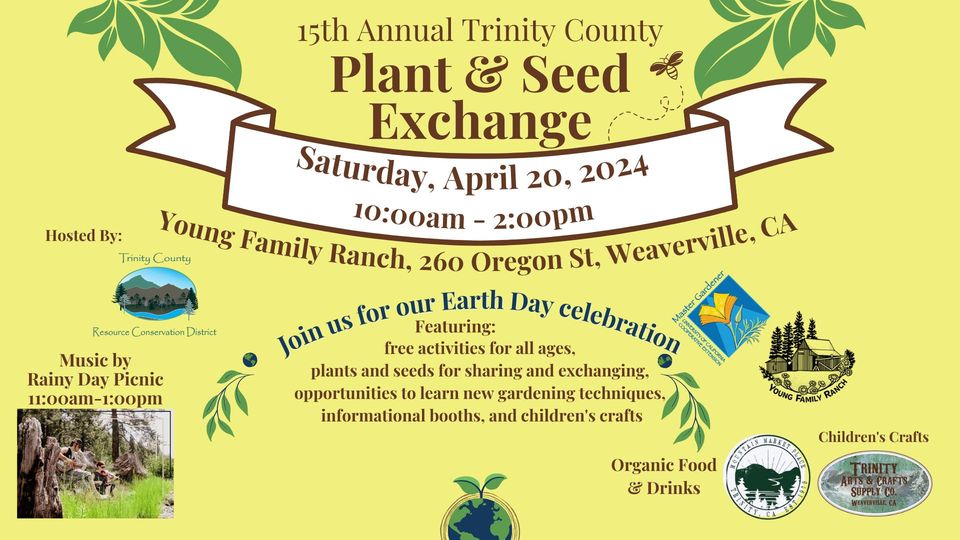
April 20, 10am-2pm – 15th Annual Plant and Seed Exchange
Young Family Ranch – Weaverville
Join us in the celebration of Earth Day at the Young Family Ranch (260 Oregon St., Weaverville) on April 20, 2024, from 10:00 am to 2:00 pm for the 15th Annual Trinity County Plant & Seed Exchange. This event is hosted by the Trinity County Resource Conservation District, the University of California Cooperative Extension Master Gardeners Program, and the Young Family Ranch Trust.
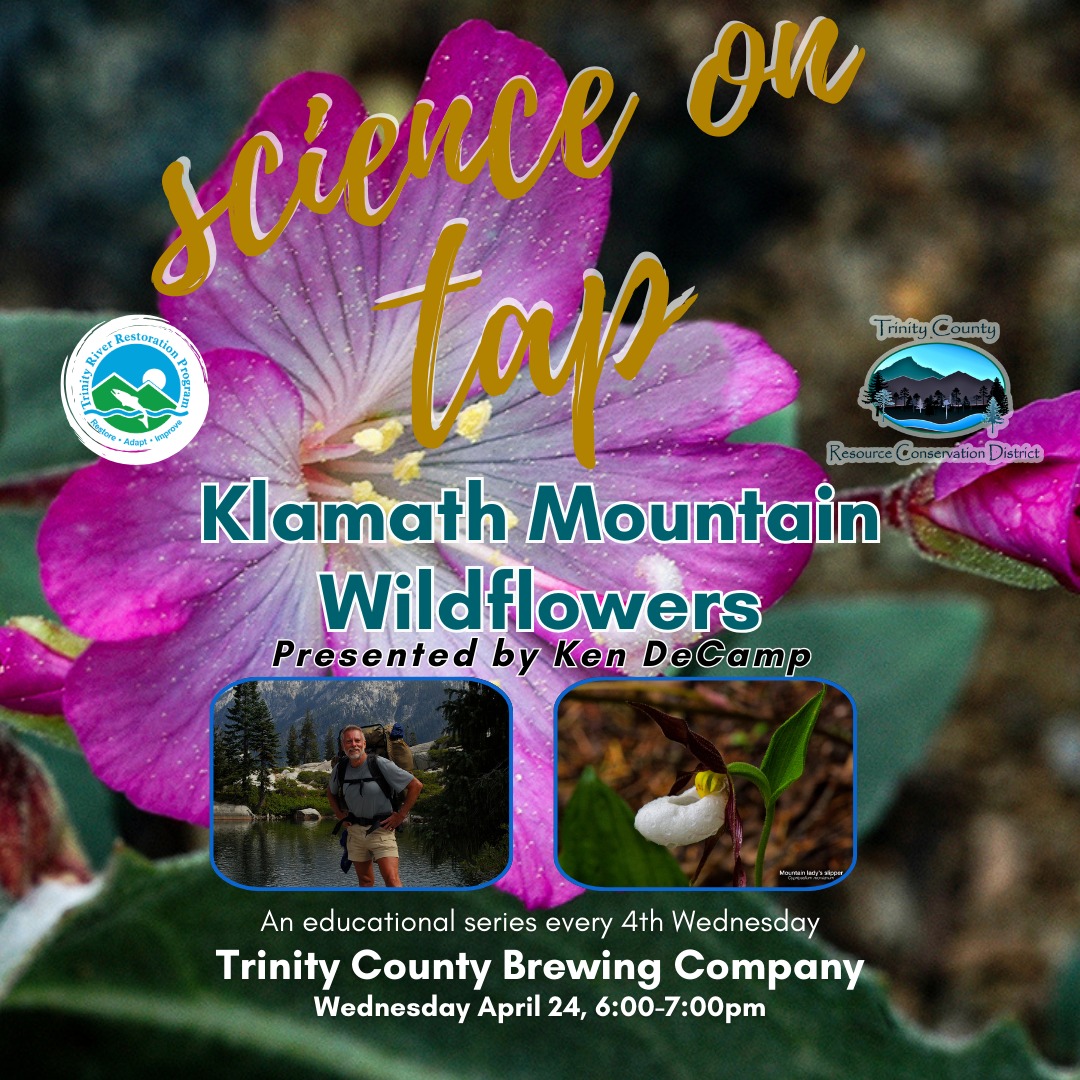
April 24, 6pm – Science on Tap
Trinity County Brewing Company
Join us on April 24th at 6 PM at Trinity County Brewing Company for Science on Tap, featuring Ken DeCamp. Ken, a renowned photographer and naturalist, will discuss “Klamath Mountain Wildflowers,” spotlighting the region’s diverse flora, including rare wildflowers. With a lifetime spent in the Trinity Alps and its surroundings, Ken truly has a passion for backpacking and photography. He holds a Geography degree from UC Davis, a Master’s in Fluvial Geomorphology, and additional qualifications in Spatial Analysis from Harvard, along with Fire Weather studies in Montana.
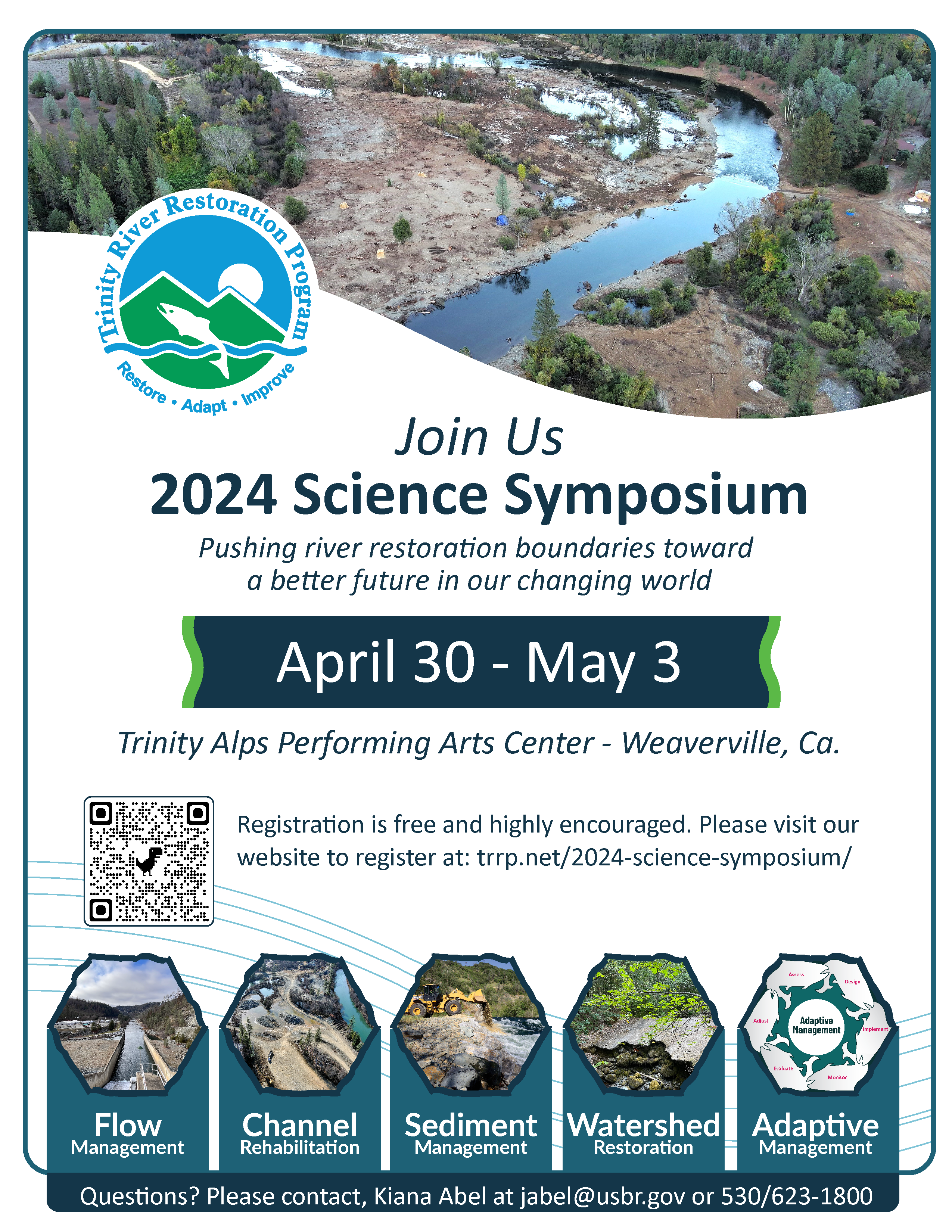
April 30 – May 3 Trinity River Restoration Program Science Symposium
Trinity Alps Performing Arts Center
Pushing river restoration boundaries toward a better future in our changing world.
A science-forward event that is open to the public with the intent of pushing river restoration boundaries toward a better future in our changing world. Check out the presenter line-up by clicking below.
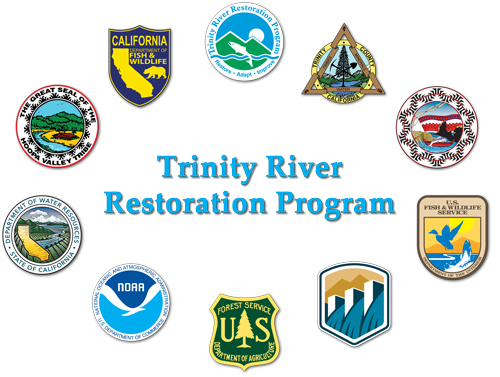
June 5 & 6, All Day – Quarterly TMC Meeting
In Person: Weitchpec, Ca.
Virtual: Click here to join the meeting
Meeting ID: 240 838 004 048
Passcode: WtYvMS
Contact Us
Call Us: 530-623-1800 Email Us: info@trrp.net

